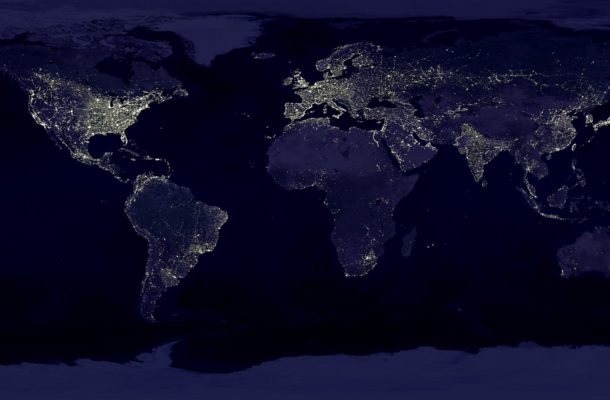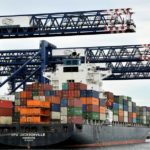Australia’s annual geo-economic statement

Australian defence white papers come along occasionally and foreign policy papers are rare, but each year Canberra produces a geoeconomic report card.
Although the federal budget is an intensely domestic creature, the Treasury documents always offer a snapshot of global wealth and power.
The strengths and culture of the Treasury department—plus the series of budget statements and papers—give the geoeconomic commentary a permanent place. Treasury owns the right and uses it. Governments, prime ministers and treasurers come and go. Treasury endures, guarding and wielding its annual right to pronounce on the domestic and global economy.
Despite its dour image, Treasury’s geoeconomic ideology is liberal internationalist with an optimistic faith in free trade and globalisation.
Australia’s 2016 Defence White Paper and the 2017 Foreign Policy White Paper were rendered in dark colours. The contrasting Treasury view is brighter. In Treasury world, the US is great and China is wonderful.
The geoeconomic report card on the outlook for the international economy is always in Statement 2 of Budget Paper No. 1. Australia enters its 27th consecutive year of economic growth. The domestic good times have rolled so long they’re the norm, part of the national expectation. Yet nearly three decades without a recession is a record for Oz that reaches towards a world record.
With 2.¾% growth this financial year (2017–18), Treasury predicts 3% for the next two financial years, helped along by the international upswing: ‘Global growth has risen to its fastest pace in six years, with widespread strength across both advanced and emerging economies … Overall, the global cycle is better synchronised than it has been for some time.’
When I started jumping into Statement 2 back in the mid-1970s, the Treasury geoeconomic hierarchy had the US firmly on top. Today there’s a lot more jostling. Through the 1980s and 90s, Japan came close to sharing the top spot with the US.
Then the China express roared into Oz. In the first decade of this century, Treasury embraced purchasing power parity (PPP) in preference to the US$ exchange rate beloved by American firsters. The purpose was to emphasise China’s arrival in second spot, overtaking Japan. By 2006, Treasury was using PPP to rank China as the second largest economy and India the fourth largest, to dramatise far-reaching changes in global power.
In this decade, Treasury hasn’t been mentioning the purchasing power measure, perhaps because PPP says China overtook the US to become the world’s top economy in 2014. No need to rub it in. And for much of this decade, the Treasury geoeconomic discussion has started with China anyway.
This year, though, the hierarchy used in Statement 2 was the US, China, India and Japan:
United States: ‘Strong growth’ with unemployment at 4%, ‘around multi-decade lows’. Donald Trump got his tax cuts. Increased demand and capacity constraints spell more US imports and inflationary pressure. Fiscal stimulus (let ’er rip, says The Donald) pushes against Fed Reserve monetary tightening, ‘heightening the downside risks’. The danger of a Trump tariff/trade war escalating causes ‘uncertainties for both the US and global outlook’.
China: Experienced stronger than expected growth in 2017, driven by robust consumption and a pick-up in exports. Despite the good near‑term outlook, growth in China is expected to moderate over time below the current annual target of 6.5%. China wants to rein in risk in the financial system, deal with industrial overcapacity and clean up its environment. The Treasury conclusion is that Beijing must manage the transition to ‘quality growth’ while facing ‘geopolitical tensions’.
India: On the rebound after a disrupted 2017, India is forecast to reclaim its title as the ‘world’s fastest growing major economy’ in 2018. The Treasury conclusion: ‘External factors such as higher oil prices and rising protectionism present risks to India’s economic growth.’
Japan: Eight consecutive increases in quarterly GDP represent ‘the longest run of growth in almost 30 years’. Unemployment is close to its lowest since the 1990s. Still, demography is destiny: ‘In the longer term, Japan’s demographic challenges remain substantial.’
Over the past five years, Treasury has changed the emphasis of its reporting on what it still quaintly describes as ‘Other East Asia’. More focus is given to the ‘ASEAN-5’, comprising Indonesia, Malaysia, the Philippines, Thailand and Vietnam. This has delighted half of ASEAN, while miffing some others of the Other, especially South Korea and Taiwan.
Skipping past the Treasury paragraph on ‘the euro area’ and Brexit, Southeast Asia now gets its own treatment as an important element of the geoeconomic ecology.
ASEAN‑5: Broad-based growth will continue. More trade‑exposed economies (particularly Vietnam, Malaysia and Thailand) have benefited from the global pick‑up in global trade, given their significance in global supply chains. The Philippines is also on the up. Treasury summation:
As globally integrated economies with large trade exposures, these economies are particularly susceptible to the risk of rising protectionism as well as moderating growth in the Chinese economy and the pace of monetary policy normalisation in the US.
Treasury often mounts the soapbox for a mini lecture. Last year’s lecture was on global trade growth, 2016 was economic transitions in China and Australia, and 2015 was India’s growing potential as a partner. This year it’s the importance of trade to the global economy. The name ‘Trump’ doesn’t appear in the mini muse moment, but it’s all about Donald:
The increasing integration between countries means that significant changes to trade policies in one country, especially a large and globally integrated country, are likely to affect many other economies around the world. This increases the uncertainty around the effects of any rise in trade protectionism.
Even Treasury is a little Trump-ed.
Graeme Dobell, a journalist for 45 years, has been reporting on Australian and international politics, foreign affairs and defence, and the Asia Pacific since 1975. He is Journalist Fellow with the Australian Strategic Policy Institute, writing for ASPI’s blog, The Strategist.








